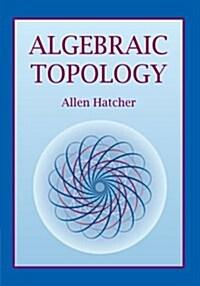책 이미지

책 정보
· 분류 : 외국도서 > 기술공학 > 기술공학 > 생화학
· ISBN : 9781119755890
· 쪽수 : 352쪽
· 출판일 : 2021-10-26
목차
Preface
Forewords
About the Authors and Acknowledgements
List of Symbols
Chapter 1: Rate Concept and Species Conservation Equations in Reactors
1.1 Reaction Rates of Species in Chemical Conversions
1.2 Rate of a Chemical Change
1.3 Chemical Reactors and Conservation of Species
1.4 Flow Reactors and the Reaction Rate Relations
1.5 Comparison of Perfectly Mixed Flow and Batch Reactors
1.6 Ideal Tubular Flow Reactor
1.7 Stoichiometric Relations Between Reacting Species
Problems and Questions
References
Chapter 2: Reversible Reactions and Chemical Equilibrium
2.1 Thermodynamics of Chemical Reactions
2.2 Different Forms of Equilibrium Constant
2.3 Temperature Dependence of Equilibrium Constant and Equilibrium Calculations
Problems and Questions
References
Chapter 3: Chemical Kinetics and Analysis of Batch Reactors
3.1 Kinetics and Mechanisms of Homogeneous Reactions
3.2 Batch Reactor Data Analysis
3.2.1 Integral Method of Data Analysis
3.2.2 Differential Method of Data Analysis
3.3 Changes in Total Pressure or Volume in Gas Phase Reactions
Problems and Questions
Chapter 4: Ideal Flow Reactors: CSTR and Plug Flow Reactor Models
4.1 CSTR Model
4.2 Analysis of Ideal Plug Flow Reactor
4.3 Comparison of Performances of CSTR and Ideal Plug Flow Reactors
4.4 Equilibrium and Rate Limitations in Ideal Flow Reactors
4.5 Unsteady Operation of Reactors
4.5.1 Unsteady Operation of a Constant Volume Stirred Tank Reactor
4.5.2 Semi-Batch Reactors
4.6 Analysis of a CSTR with a Complex Rate Expression
Problems and Questions
References
Chapter 5: Multiple Reactor Systems
5.1 Multiple CSTRs Operating in Series
5.2 Multiple Plug Flow Reactors Operating in Series
5.3 CSTR and Plug Flow Reactor Combinations
Problems and Questions
Chapter 6: Multiple Reaction Systems
6.1 Selectivity and Yield Definitions
6.2 Selectivity Relations for Ideal Flow Reactors
6.3Design of Ideal Reactors and Product Distributions for Multiple Reaction Systems
Problems and Questions
References
Chapter 7: Heat Effects and Non-Isothermal Reactor Design
7.1 Heat Effects in a Stirred Tank Reactor
7.2 Steady-State Multiplicity in a CSTR
7.3. One Dimensional Energy Balance for a Tubular Reactor
7.4Heat Effects in Multiple Reaction Systems
7.5 Heat Effects in Multiple Reactors and Reversible Reactions
7.5.1 Temperature Selection and Multiple Reactor Combinations
7.5.2 Cold Injection Between Reactors
Problems and Questions
Case Studies
References
Chapter 8: Deviations from Ideal Reactor Performance
8.1 Residence Time Distributions in Flow Reactors
8.2 General Species Conservation Equation in a Reactor
8.3 Laminar Flow Reactor Model
8.4 Dispersion Model for a Tubular Reactor
8.5 Prediction of Axial Dispersion Coefficient
8.6 Evaluation of Dispersion Coefficient by Moment Analysis
8.7Radial Temperature Variations in Tubular Reactors
8.8 A Criterion for the Negligible Effect of Radial Temperature Variations on the Reaction Rate
8.9 Effect of Ratio on the Performance of a Tubular Reactor and Pressure Drop
Problems and Questions
Exercises
References
Chapter 9: Fixed Bed Reactors and Interphase Transport Effects
9.1 Solid Catalyzed Reactions and Transport Effects within Reactors
9.2 Observed Reaction Rate and Fixed Bed Reactors
9.3 Significance of Film Mass Transfer Resistance in Catalytic Reactions
9.4 Tubular Reactors with Catalytic Walls
9.5 Modeling of a Nonisothermal Fixed Bed Reactor
9.6 Steady-State Multiplicity on the Surface of a Catalyst Pellet
Exercises
References
Chapter 10: Transport Effects and Effectiveness Factor for Reactions in Porous Catalysts
10.1 Effectiveness Factor Expressions in an Isothermal Catalyst Pellet
10.2 Observed Activation Energy and Observed Reaction Order
10.3 Effectiveness Factor in the Presence of Pore Diffusion and Film Mass Transfer Resistances
10.4 Thermal Effects in Porous Catalyst Pellets
10.5 Interphase and Intrapellet Temperature Gradients for Catalyst Pellets
10.6 Pore Structure Optimization and Effectiveness Factor Analysis for Catalysts with Bi-Modal Pore-Size Distributions
10.7 Criteria for Negligible Transport Effects in Catalytic Reactions
10.7.1 Criteria for Negligible Diffusion and Heat Effects on the Observed Rate of Solid Catalyzed Reactions
10.7.2 Relative Importance of Concentration and Temperature Gradients in Catalyst Pellets
10.7.3 Intrapellet and External Film Trasport Limitations
10.7.4 A Criterion for Negligible Diffusion Resistance in Bidisperse Catalyst Pellets
10.8 Transport Effects on Product Selectivities in Catalytic Reactions
Exercises
References
Chapter 11: Introduction to Catalysis and Catalytic Reaction Mechanisms
11.1 Basic Concepts in Heterogeneous Catalysis
11.2 Surface Reaction Mechanisms
11.3 Adsorption Isotherms
11.4 Deactivation of Solid Catalysts
11.5 Synthesis and Characterization of Solid Catalysts
11.5.1 Characterization Techniques
Exercises
References
Chapter 12: Diffusion in Porous Catalysts
12.1 Diffusion in a Capillary
12.2 Effective Diffusivities in Porous Solids
12.3 Surface Diffusion
12.4 Models for the Prediction of Effective Diffusivities
12.5 Diffusion and Flow in Porous Solids
12.6 Experimental Methods for the Evaluation of Effective Diffusion Coefficients
Exercises
References
Chapter 13: Process Intensification and Multifunctional Reactors
13.1 Membrane Reactors
13.2 Reactive Distillation
13.2.1 Equilibrium Stage Model
13.2.2 A Rate-Based Model for a Continuous Reactive Distillation Column
13.3 Sorption Enhanced Reaction Process
13.4 Monolithic and Microchannel Reactors
13.5 Chromatographic Reactors
13.6 Alternative Energy Sources for Chemical Processing
References
Chapter 14: Multiphase Reactors
14.1 Slurry Reactors
14.2 Trickle Bed Reactors
14.3 Fluidized Bed Reactors
References
Chapter 15: Kinetics and Modeling of Non-Catalytic Gas-Solid Reactions.
15.1 Unreacted Core Model
15.2 Deactivation and Structural Models for Gas-Solid Reactions
15.3 Chemical Vapor Deposition Reactors
Exercises
References
Appendix A: Some Constants of Nature
Appendix B: Conversion Factors
Appendix C: Dimensionless Groups and Parameters

























